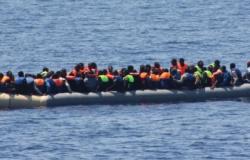How to Walk the Talk to End Forced Migration?

World leaders gather in New York on 19 September 2016 for a summit on large movements of refugees and migrants. Through this blog series the United Nations University Migration Network (UNU MN) will reflect on the challenges and opportunities of the summit from various critical perspectives: migration governance and policy; forced migration; migration and environment; migration and health; migration and culture; and migration and development. The series will culminate in a single summary post shortly after the summit.
Violence and the forced movement of people are now at unprecedented levels worldwide. At this critical moment, there are two signals that cannot be ignored: firstly, the pleas for humanity of those forced to flee violence, disease, starvation and other extreme situations, and, secondly, the relevant responses of international organisations, governments and societies. The upcoming UN high-level plenary meeting of the General Assembly on addressing large movements of refugees and migrants, set for 19 September 2016, could represent a positive model to govern these phenomena. In such a light, safeguarding that the constructive proposals would be implemented in ways that will not further endanger both the most vulnerable and world society as a whole is crucial.
There could actually be diverse ways to apply some of the commitments that the draft outcome document of the 19 September summit contains. One example would be improved cooperation between transit and destination countries, particularly on irregular border crossings. While it is certainly positive that transit and destination countries cooperate to ensure safe and regular passages for those fleeing dangerous situations, measures should exist to guarantee that this cooperation would not translate into additional violence, abuses and different forms of discrimination. As the European Commission noted in its 2015 ‘Action Fiche’ on the Horn of Africa, financial aid in return for stricter border controls carries major risks and challenges. Aid delivered to governments may in fact be used to further repression in both transit and origin countries and against those fleeing violence, persecution or other extreme situations.
Also in the spotlight are measures to shut down irregular border crossings. UNU-GCM’s research project ‘Migration and Crises’ has shown that the hardening of border policies has not decreased the number of irregular crossings. However, it has certainly increased the business opportunities for both smugglers and human traffickers. Data included in the 2016 Risk Report of the EU’s Frontex Agency corroborate these findings.
Another project, Mediterranean Journeys in Hope, highlights the various blurring of categories of refugees and other forced and voluntary migrants, in both the techniques of those authorities that assess their entry requests and the brutal realities that these persons face when they move. Therefore, it is essential to demand the full respect of both the Refugee Convention and its 1967 Protocol on the one hand, and the Universal Declaration of Human Rights and the European Convention for the Protection of Human Rights on the other. Everyone is entitled to a fair trial by a judicial court.
There is one straightforward way to tackle these issues: create and increase, where they already exist, opportunities for regular and safe migration – as a broad range of UNU research suggests. For example, the Rainfalls project supports the view that migration can be a successful adaptation strategy by contributing to livelihood stability of migrants themselves and in the areas of origin, as a recent article highlighted. This is something that the draft outcome document of the summit also positively stresses. However, an increase in regular and safe migration should not only concern those “desired” migrants, with the “desired” skills and the “desired” skin colour, religion or culture. Prejudice, and particularly its extremist manifestations, such as xenophobia and both biological and cultural forms of racism and discrimination, all hinder this from happening in certain places (see ‘Why Prejudice is a Global Security Threat‘). As a consequence, dangerous spirals of violence are threatening international peace and security globally.
It is well known that abuses, violence, anger, desperation, starvation and alienation, all play a role in feeding extremism and its diverse manifestations. Those who fled this certainly hope for a better world; one that is keen to help, welcome and include them and their children in a different, more democratic and inclusive socio-political and cultural context, where they can indeed positively contribute to a common, better future. They cannot flee violence, terrorism, degradation and starvation only to find prisons, abuses, and other forms of extremism – or more walls rather than bridges could be built across the globe.
Democratic and inclusive states cannot allow extremist and xenophobic groups to compromise what has been achieved over the last 70 years, since the end of the Second World War and the creation of the United Nations. Violence only feeds violence. As UNU-GCM’s research project ‘Migration, Media and Intercultural Dialogue‘ emphasised, inclusion and intercultural dialogue nourish peace, through the adoptions of policies that foster intercultural values, cultural exchanges and enable newcomers to contribute to the socio-political development of countries. Tensions mount where high numbers of newcomers reach places where socio-economic hardship has been tackled with cuts to public expenditures at the expenses of disadvantaged categories of citizens And yet, even during economic crisis, inclusive integration policies can prevent the rise of prejudiced attitudes towards newcomers, as UNU-GCM highlighted in both a 2013 policy report and a forthcoming special issue in the journal International Migration.
Now, as they debate the future of migrants worldwide, policymakers are at a critical juncture. To constructively implement their draft commitments, international organisations and states should take three key steps:
- Create or increase opportunities for regular and safe migration for both skilled and unskilled persons;
- Agree on a ratio that takes into account states’ socio-economic situation and percentage of resident migrants (i.e., countries with ‘better’ ratios should host more refugees);
- Commit to creating more inclusive societies, via policies that promote intercultural values and dialogue.
•••
Summit Series #1: What Will be the Legacy of Alan Kurdi’s Death?
Summit Series #2: How to Walk the Talk to End Forced Migration?
Summit Series #3: Migration and the Power of Culture
Summit Series #4: Why Migrant Vulnerability Is a Community Health Issue
Valeria Bello is a Political Sociologist who has taught and published in the fields of Sociology, International Relations and Political Science. Her main research interests concern the role of both identity and non-state actors in the area of migration and interethnic relations, as well as in the area of international and human security. She is the main editor of the book “A Global Security Triangle: European, African and Asian Interactions” (Routledge, 2010, with Belachew Gebrewold) and co-editor of the book “Civil Society and International Governance: The Role of Non-State Actors in the EU, Africa, Asia and Middle East” (Routledge, 2011, with David Armstrong et al.). This piece first appeared on the United Nations University's website. It is licensed under a Creative Commons Attribution-Noncommercial-Share Alike 3.0 License.
Photo credit: Tracy Hunter via Foter.com / CC BY

